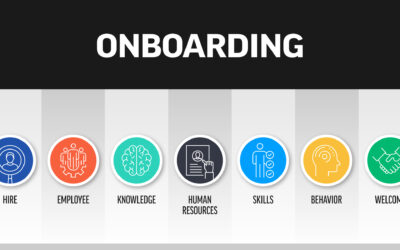In today’s highly competitive, thriving insurance industry, building and maintaining strong customer relationships is crucial for success. It not only helps to create a loyal client base, but also to generate referrals and new business opportunities. With that, it’s more important than ever to ensure smooth consumer interactions.
While this is the desired end experience, when a claim is filed, the process is put to the test and can be a make-or-break experience. Creating a seamless process is necessary in the digital age when 72% of insurance companies are increasing spending on cloud computing and storage, and 67% of them are increasing spending on data analytics, according to Deloitte’s 2022 Insurance Industry Outlook.[1] Tech will continue to drive change, and the use of digital tools is making it possible to leverage technology to ensure the customer service process runs smoothly—from new customer acquisition, to claims processing and adjuster interactions. As claims professionals begin to engage digital solutions, the relationship between client and adjuster is becoming better supported for an elevated overall customer experience.
While seamless consumer interactions are vital, digital tools in the claims process can help facilitate this relationship. That’s why it’s vital to bridge the communication gap between agents and claims professionals.
Common challenges insurance professionals face
One of the most common challenges that insurance professionals face when working with policyholders is the issue of communication barriers. While agents need to be available to their customers and responsive to their needs, they may struggle to keep up with requests—particularly when managing a large client base. In addition, customers may prefer to communicate via different channels (e.g., phone, email or chat), making it difficult for agents to manage all communication effectively. This can result in missed opportunities or misunderstandings, which can harm the client-agent relationship.
Along with the struggle of overcoming communication barriers, agents must depend on claims professionals to utilize the most efficient tools available. When digital solutions are disregarded, many agents are impacted by claim departments’ failure to keep up, which ultimately hurts the customer experience. Often, this is a result of the fact that carriers are having to juggle multiple independent programs to handle claims. It’s well-known that these programs do not communicate with each other without the cumbersome task of duplication or manipulation to do so. Regardless of the tools these firms add to their offerings, they still are limited. Offering a high-quality customer experience means claims adjusters are calling on a suite of solutions that work seamlessly together to provide stress-free management, real-time analytics, and tech-advanced features (e.g., virtual photo scoping).
And above all, we need to move toward a cohesive experience that does not start and stop at the beginning of the process but rather one that carries through to the end. When agents and claims professionals move toward their own individual goals, the gap between the two parties grows wider, ultimately leaving customers frustrated in the middle. For instance, when customers find they must pay their premiums in one portal, and then source an entirely new platform to submit a claim, a breeding ground for negative customer experiences is a result. Opportunities are missed, and policyholders begin shopping for new insurance options.
Also, digital tools can be a powerful asset for claims professionals in creating smoother processes between insurance agents and clients. However, it’s important to acknowledge that they can pose certain challenges. Common issues include difficulty integrating new tools with existing systems; a lack of training or understanding of how to use tools effectively; and potential cyber security risks. In addition, insurance agents may face communication barriers with customers who are not familiar with using certain digital channels that adjusters have presented to them—leading to potential misunderstandings or missed opportunities. However, when both agents and claims professionals are aligned on tapping into digital tools, the customer can receive support and a consistent flow from beginning to end.
Benefits of using internal digital tools
As mentioned, digital tools can play a critical role in helping insurance agents overcome communication barriers and time-management issues. Ultimately, these tech tools allow for an aggressive move toward virtual inspections and adjusting, which helps claims professionals provide timely information to your valued clients and—when the agent side is on the same page with utilizing digital tools—a seamless, positive client experience is created. It’s a win-win. While virtual inspections were once just a big idea, now they are a reality that is leveraged by those who are leading the way in stress-free insurance customer-service experiences.
Also, AI and machine learning are digital tools that adjusters are beginning to tap into—and although some may feel hesitant and worry that it will reduce the workforce—many understand that it will increase efficiency for both adjusters and agents, allowing more time to focus on tasks that must be handled with the human touch. AI has enhanced chatbots that are able to provide more robust responses to common questions, reducing client wait times, as well as agent workloads. This can save time and increase convenience for both parties. By using these digital tools, agents can streamline their workflows, improve productivity, and ultimately provide a better overall experience when partnering with claims professionals who also are committed to tapping into technology to better the client experience.
Best practices for using internal digital tools
Implementing digital tools in the insurance industry can be revolutionary for insurance professionals who want to improve their customer service and streamline workflows. To make the most of these tools, agents should follow some best practices. First, agents should evaluate their workflow to identify areas in which digital tools could be most effective. This helps agents prioritize which tools to use and where to focus their efforts. Second, agents should take the time to learn how to use the tools properly, and how to integrate them into their existing workflows. By doing so, they can ensure that the tools are used efficiently and effectively.
There are numerous examples of successful implementations of digital tools in the insurance industry. Some companies have implemented chatbots to provide instant customer service and reduce the workload on agents to improve response times. They also create personalized messaging and educational campaigns as an ideal strategy to continue with customer touchpoints. In addition, sending customer surveys is a great way to learn how you did and to learn what customers need while also understanding what might be needed to implement for all customers in the future. Others have used customer relationship management software to better manage client interactions, resulting in more personalized service and higher customer satisfaction. Despite positive efforts in using such tools and systems, the full range of benefits will never reach its full potential with such a disconnect between the frontend and backend—particularly the lack of communication between the agent and claims worlds. A range of benefits, including increased efficiency, improved customer satisfaction and more streamlined workflows is in reach if we can welcome cohesiveness from start to finish.
In today’s competitive insurance industry, smooth client-agent interactions are essential for building trust, fostering long-term relationships, and ultimately growing a successful business. However, more so than that, seamless digital interactions are crucial. Comprehensive digital tools can be a game-changer in achieving this goal. They can help insurance agents streamline communication, manage their time more effectively and provide a better overall experience for their clients while knowing that the claims side is moving toward that same goal.
Consider exploring and adopting digital tools to improve workflows and better serve your customers while opening communication lines with claims professionals to create a consistency upon which you can rely. By embracing better communication with all professionals involved in each step of the process, agents can save time, increase productivity, and build stronger customer relationships. In an industry that tends to implement change slower than the rapid pace of the introduction of new digital tools, we must all commit to finding a strategy that bridges the gap through mechanisms that interact. Ideally, this would take place within one platform, but until we reach that day, it’s on insurance professionals to source tools that communicate seamlessly and operationally.
Stay ahead of the curve and remain competitive in a rapidly changing industry. Ultimately, investing in digital tools can lead to more satisfied clients, increased revenue, and a more successful insurance business. So, don’t hesitate to start exploring the various digital tools available and find the ones that are right for your business.
An excerpt of this article ran in the June 2023 issue of PIA Magazine.
[1] Deloitte, 2022 (bit.ly/3Aa0k6O)

Denis Connolly
Connolly has held sales and corporate development positions at several Fortune 500 companies, executing multi-million-dollar acquisitions in addition to driving large incremental sales revenues. At Brush Claims, he works with the firm’s carrier strategic partners while building and establishing new key client relationships. He also oversees the sales, marketing, customer service, and client relationship management teams. Connolly brings a unique perspective on insurance after spending the last several years growing two separate InsurTech startup companies, gaining deep insight into managing deal flow and the strategic expansion of technology companies into new global markets.






